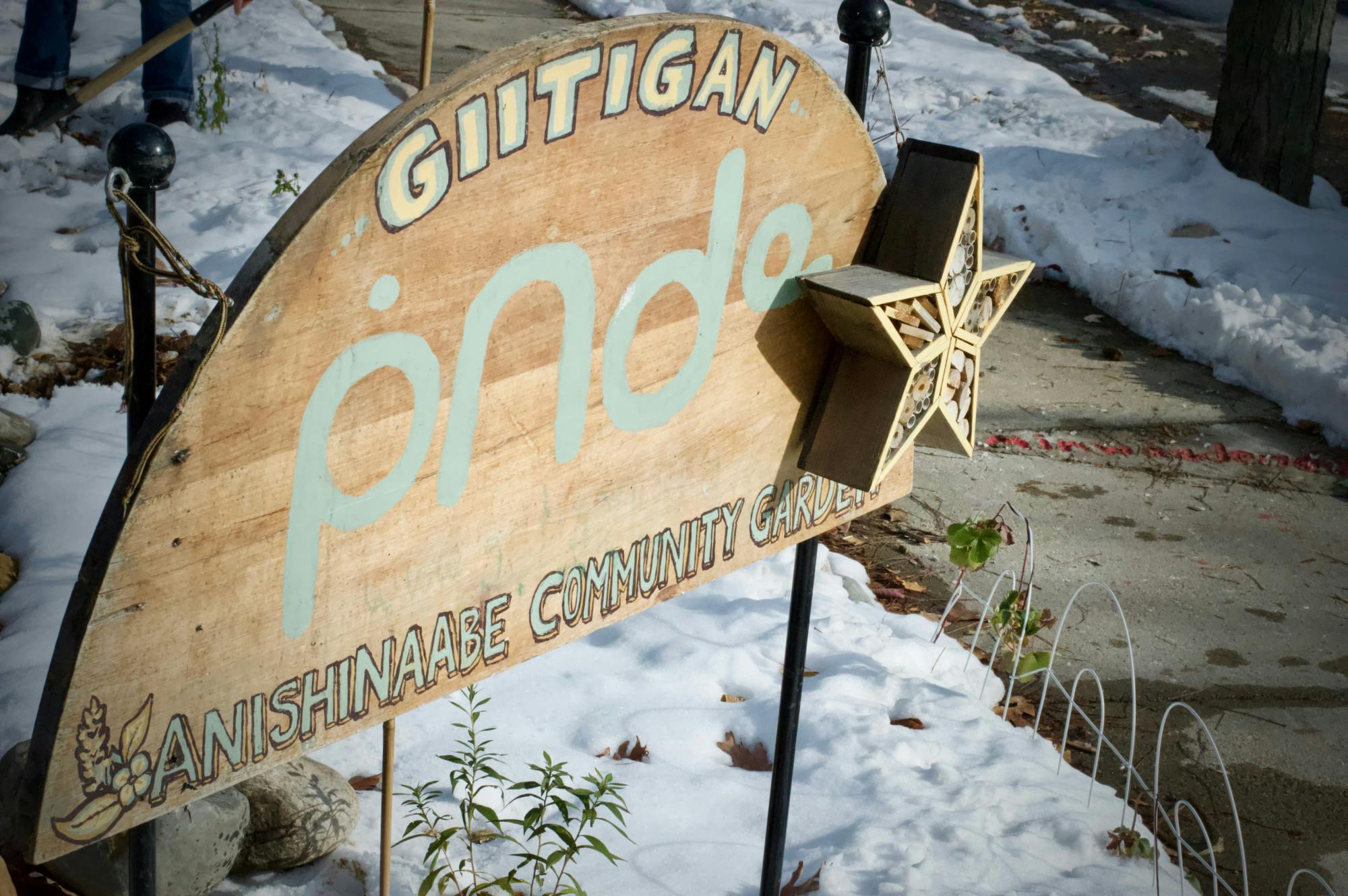As winter approaches, the Anishinaabe community garden, called Giitigan, prepares for the weather change.
This coming week, there will be events on Dec.12 and Dec.16 to help transition the garden for winter, a practice known as winterizing. They'll take place from 3 p.m. to 5 p.m.
The garden, located at 537 Clifford St. in Lansing, was founded in 2019 by community sustainability graduate student Grant Gliniecki. Throughout the year, Giitigan offers a community space for Indigenous students at the university, though Gliniecki said all are welcome. He said winterizing the garden is crucial to keeping it healthy.
With help from Timetzalimet students, the winterizing process will consist of putting six inches of old plant material on each bed and removing sick plants. Gliniecki said the last step is a closing song to thank the land for the time and care it put into taking care of the plants, encouraging good rest.
“Winterizing is just an important part of taking care of a garden traditionally and both in terms of horticultural and agricultural sciences,” Gliniecki said. “The Anishinaabe perspective of it is that the ground and all the creatures in the ground need time to do their magic, which will feed the plants, which also aligns really nicely with modern western science views on how to care for soil and to regenerative soil practices.”
The winterizing process marks the end of a year-long endeavor. Each January, Gliniecki begins propagating seedlings in his house, which he then gives out to people to propagate in their own homes until spring. They then plant the propagated seedlings, which sometimes involves teaching community members about the process. Some of the crops go in Giitigan while others are planted in the Hunter Park Gardenhouse.
While the planting and harvesting processes are important, the garden also has a larger role for Gliniecki and other Indigenous community members. When creating the garden, Gliniecki placed a large focus on youth empowerment.
“The reason I felt confident going into science … is that my mom was very intentional about leaving space for me to understand and explore the world in the way that made sense to me — in a rigorous, mindful way — and explained why sometimes we just didn't get things the way that they're being explained,” Gliniecki said. “Because there are a lot of assumptions made about how people from different cultures experience and understand the world, and if you're missing some of those core pieces, a lot of the more complicated ideas can get more and more challenging to really internalize.”
Given his appreciation for a different approach to learning, Gliniecki decided that a garden could implement these experiences for others. Additionally, gardens, along with the land they are on and the plants within them, have an importance in Anishinaabe culture.
“On top of everything, the land and plants have a lot to teach us,” Gliniecki said. “(Giitigan is) a mix of hopefully being empowering for youth, hopefully helping them understand that they do have a lot of the fundamental knowledge."
Though linguistics senior Diana Cisneros is new to Giitigan, the garden has offered them futile space within the community. The first time Cisneros went there, Gliniecki introduced them and other students to each plant which was similar to their family's own Poqomam and Nahua practices.
“Growing up, my grandparents, my mom, they have an understanding of plants,” Cisneros said. “... And growing up, they would always say, ‘oh, Diana, this is the name of the plant. This is the use of the plant. Talk to it. Show it that you love it.’ And I think that that's exactly like the feeling that I got when I went to Giitigan and Grant was like, ‘this is the name of this plant.’”
Cisneros said that Giitigan has offered an invaluable experience at the university.
“I really appreciated that he has given the space and made the space for Indigenous students to make a connection with the land because a lot of us haven't really gotten to have a relationship with the earth or the plants,” Cisneros said. “Even for non-native students, I think that it would be really beneficial for everyone to go because it was really comforting.”
This reaction is exactly what Gliniecki hopes the garden provides, though at its core, Gliniecki hopes that the existence itself is enough to make a statement.
“I think something that, to an extent, everybody suffers with, especially BIPOC people, is cultural disconnection and a feeling of not really being grounded to anywhere or belonging to anywhere,” Gliniecki said. “There's a very literal case of like, this is my land, and yet I don't really know much about any of my neighbors, both human and non-human, and I don't really know what I can do to help, and I feel very powerless and helpless … (It’s) reclaiming space. I think there's a very literal act of like, no, this is Anishinaabe land. This didn't stop being Anishinaabe land.”
Support student media!
Please consider donating to The State News and help fund the future of journalism.
Discussion
Share and discuss “Anishinaabe community garden welcomes winter, provides space for Indigenous students ” on social media.







